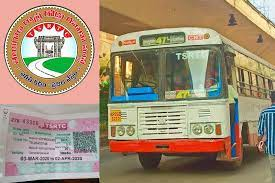Odd Even Scheme:- As the nation’s capital struggles with the worst level of pollution, the Delhi administration declared on Monday that the odd-even plan would be returning. The Odd-Even vehicle system will be in place for one week, from November 13 to November 20, due to air pollution, according to Delhi Environment Minister Gopal Rai on Monday. We go through all the fundamentals of Odd Even Scheme in this post.

What is Odd Even Scheme?
This is a form of traffic rationing where private automobiles with odd-digit registration numbers are permitted on odd-numbered days and even-digit registration numbers on even-numbered dates. Arvind Kejriwal, the chief minister of Delhi, presided over a high-level meeting on Monday that included officials and members of the cabinet to talk about strategies to reduce pollution. Following the meeting, the Environment Minister of Delhi gave a press conference where he declared that the Odd-Even system would be implemented following Diwali. Currently, the Odd-Even Scheme will be in place in Delhi for one week.
How to Change Name on Driving Licence
HSRP Online Registration
Get a Pollution Under Control Certificate
Pollution Levels Increases in Delhi
On Monday morning, pollution levels in Delhi-NCR were approximately seven to eight times higher than the permissible limit set by the government. The Central Pollution Control Board reports that Delhi’s air quality index was 488 on Monday. In response to the air turning toxic due to adverse wind conditions and a high increase in farm fires throughout north India, the Delhi government, led by the Aam Aadmi Party (AAP), has implemented strict measures in recent days, such as prohibiting the entry of polluting trucks. Unfavourable weather patterns, car emissions, burning paddy straw, firecrackers, and other regional sources of pollution all play a part in the dangerously high levels of air pollution that Delhi-NCR experiences every winter.
Reports on Delhi Pollution
The Delhi Pollution Control Committee (DPCC) reports that when the number of stubble-burning occurrences in Punjab and Haryana increased, the capital had its peak pollution between November 1 and November 15. The Indian Agricultural Research Institute (IARI), located in New Delhi, reports that 4,160 farm fires were reported from north India on Sunday, making it the most so far this season. Based on statistics from the Punjab Remote Sensing Centre, Punjab alone reported 3,230 stubble burning occurrences, the greatest number of incidents in a single day this season in the state.
Implementation of Odd Even Scheme
Cars having licence plates that finish in odd numbers 1, 3, 5, 7, and 9 will be permitted to operate on odd-numbered dates under this vehicle rationing programme. The odd-numbered dates in this instance will be November 13, 15, 17, and 19. However, on even-numbered dates, automobiles with licence plates that finish in the even numerals 0, 2, 4, 6, and 8 will be permitted to drive. The dates that are even in this instance are November 14, 16, 18, and 20.
Vehicle Owner Details by Number
Petrol Pump Kaise Khole
Change/ Update Photo in Aadhaar Card
Odd Even Scheme Violating Penalty
In 2019, the fine for violating the odd-even rules was increased from rupees 2,000 to rupees 4,000. The program may be implemented and those who violate it might be fined by the Delhi Traffic Police. Notably, Chief Minister Arvind Kejriwal unveiled the program for the first time in 2016. Expert opinions on the matter are divided; some believe it has reduced vehicle emissions and reduced traffic on the days it is in place.
Some experts, however, contend that there are no long-term advantages to the change. Rather, the government ought to concentrate on gradually eliminating vehicles that run on dirty fuel and increasing the incentives for switching to electric and CNG vehicles. Polluting trucks and other commercial four-wheelers will not be allowed to enter Delhi until the air quality improved, according to an official order that was issued on November 5. The national capital would only be accessible to EVs, CNG vehicles, and automobiles that complied with BS VI standards.




